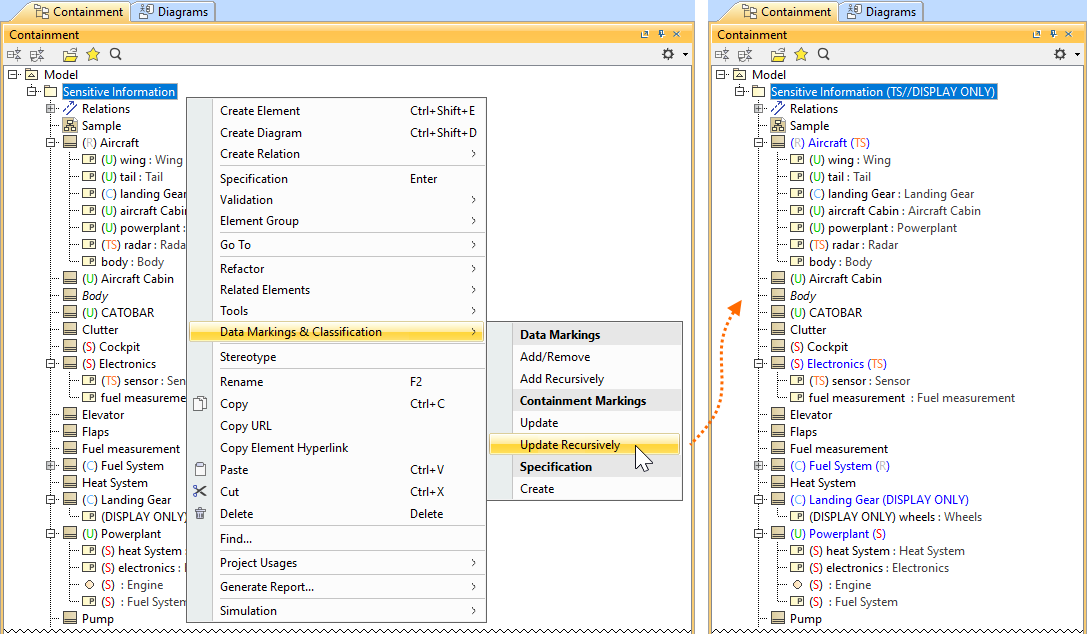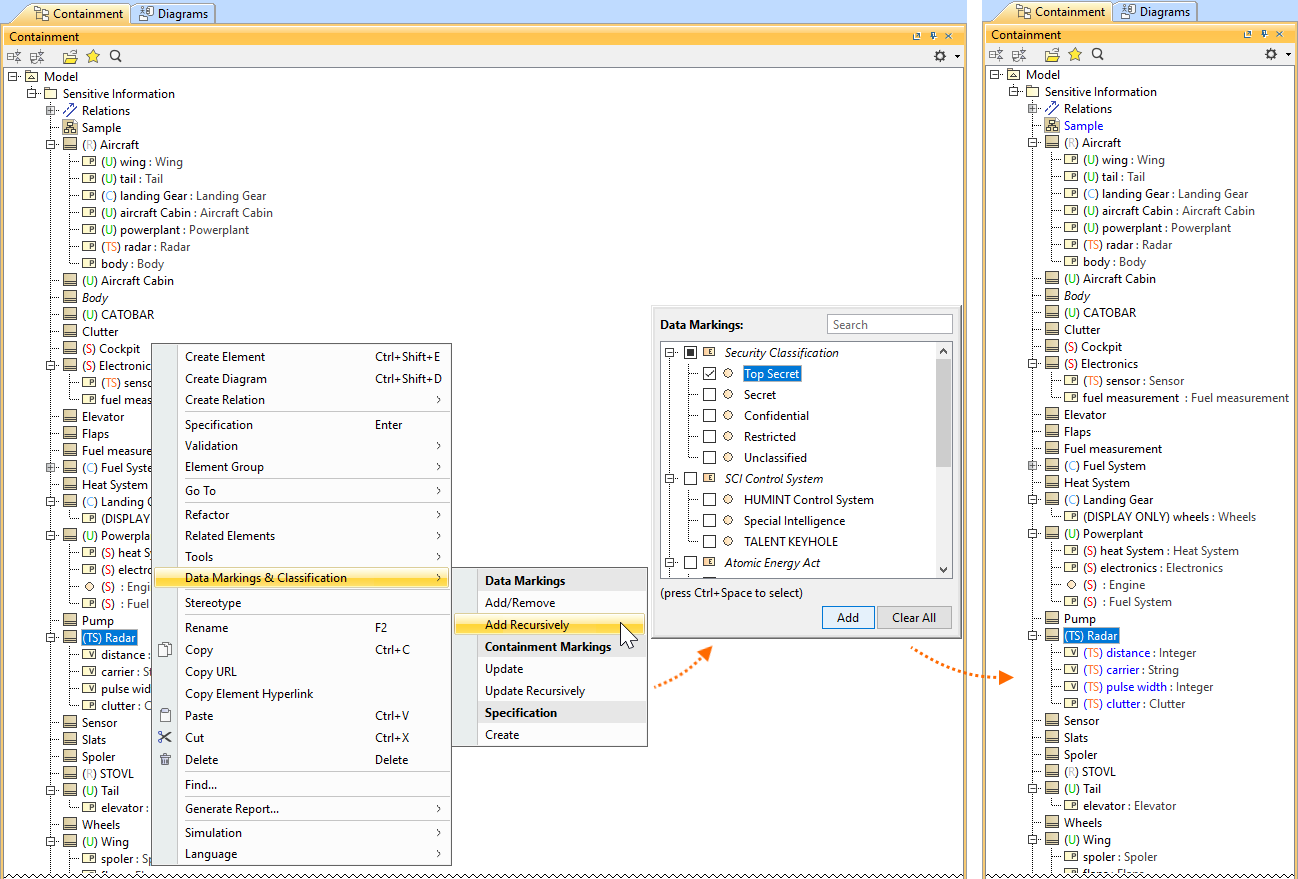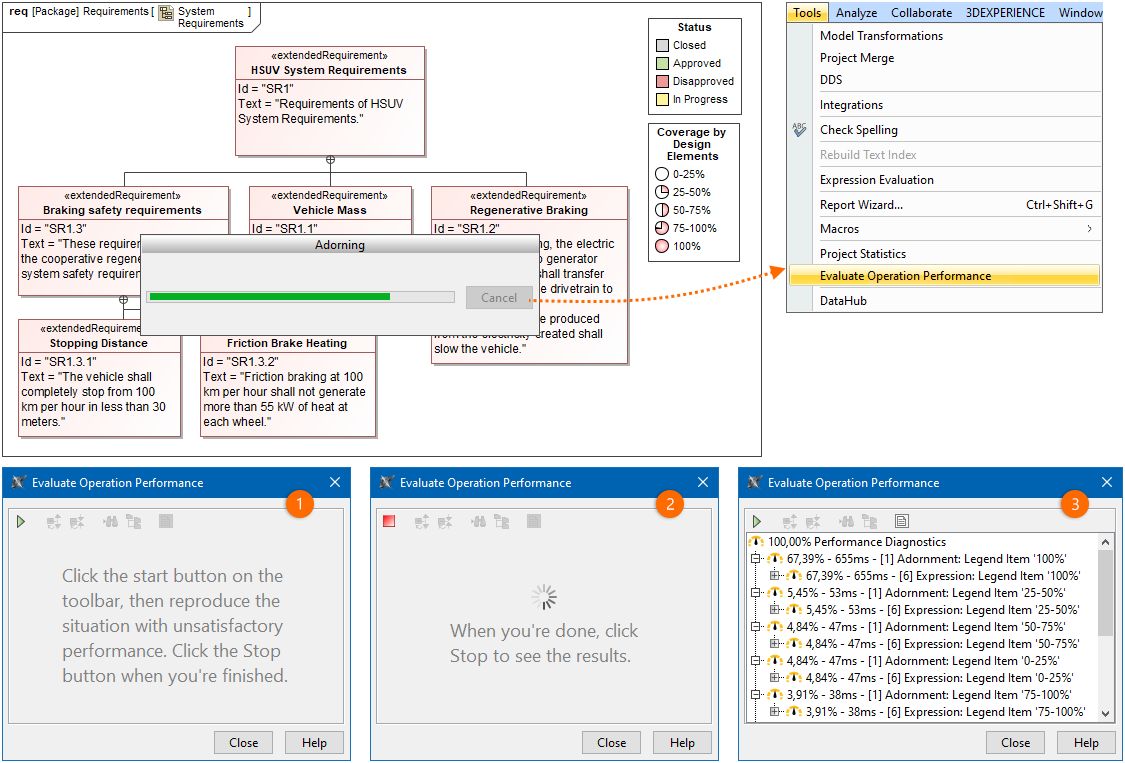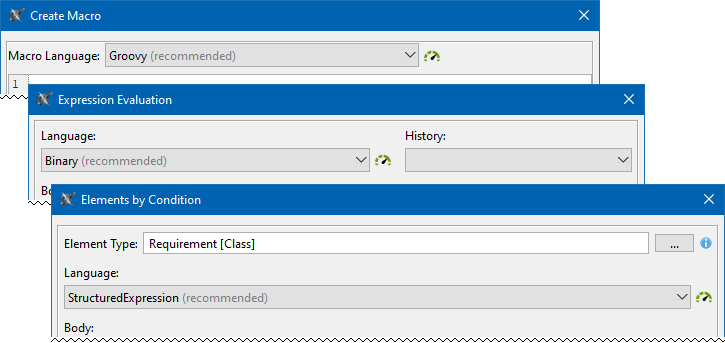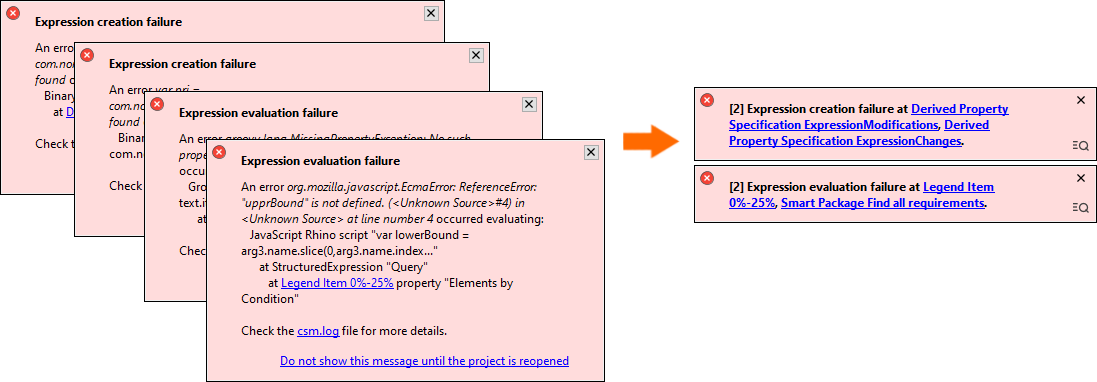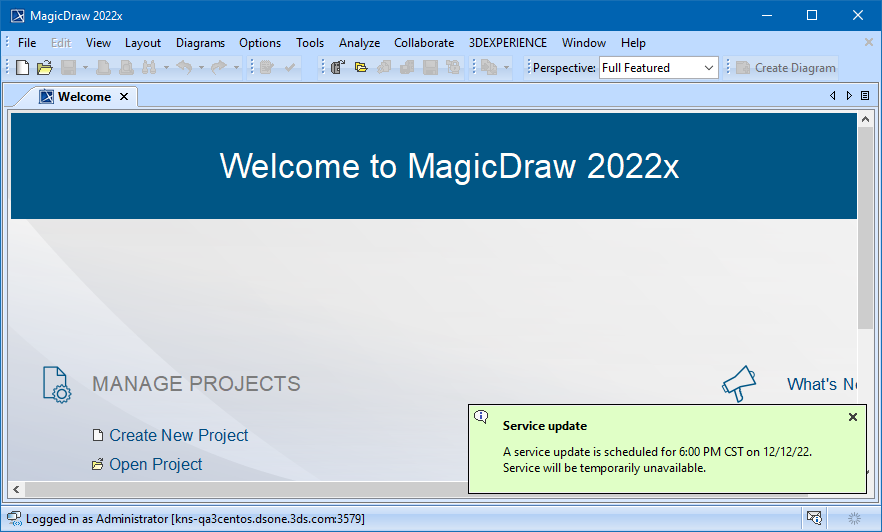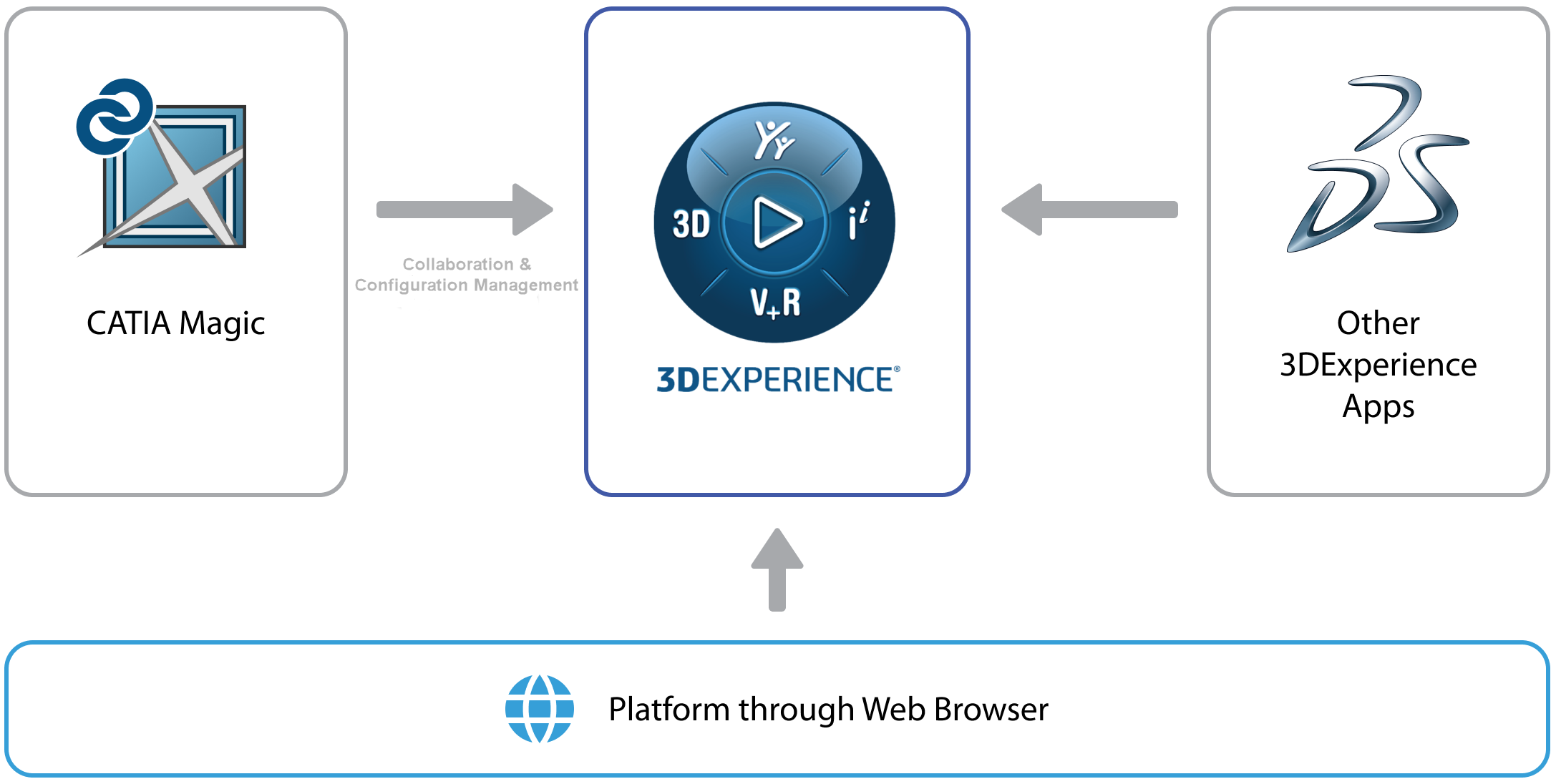Released on: November 18, 2022
The 2022x Refresh1 release introduces client-side performance improvements, general modeling, and collaborative modeling enhancements.
The 2022x Refresh1 release brings improvements to the Data Markings and Classification Plugin. The plugin is now enhanced with the ability to display Containment Markings, perform Sensitive Element Redaction model transformation, and add Data Markings recursively. The plugin now also contains additional validation rules to support the new features.
The client-side performance improvements include the Evaluate Operation Performance capability, that will help determine the reasons behind slow tool operations caused by the execution of expressions. Additionally, the 2022x Refresh1 version provides a separate installation file for ARM architecture-based macOS (i.e., Apple M1).
For general modeling, this release presents an improved error notification display, fully featured Structured Expressions dialogs without the separate Standard/Expert UI modes, a new 'UI Font' environment option for changing the default application font, and an ability to create custom project disclaimer configurations.
Additionally, collaborative modeling is now improved with custom announcements that can be displayed to users in the modeling tool and with additional collaboration capabilities offered by the 3DEXPERIENCE platform.
To download the latest MagicDraw version, see Downloading installation files. Don't forget to give us your feedback on LinkedIn. For further information, check the product documentation.
Data Markings and Classification Plugin Improvements
The 2022x Refresh1 version introduces new and improved functionality in the Data Markings and Classification Plugin, including:
- Display Containment Markings. You can now choose to have Containment Markings that are displayed on the parent element, indicating the owned elements' Data Markings. They are displayed in parentheses as postfixes next to the element name. Use the newly introduced Element Types with Containment Markings project option to specify which element types can have Containment Markings displayed on them. This feature allows you to quickly see the owned elements' Data Markings by simply glancing at the parent element. Learn more about Containment Markings >>
The Containment Markings are updated recursively for the package Sensitive Information and its contained elements.
- Sensitive Element Redaction. The Sensitive Element Redaction model transformation allows you to narrow down the full model by removing elements with the selected Data Markings. It allows you to increase the security of your models by controlling what elements should constitute the model based on their Data Markings. Learn more about Sensitive Element Redaction >>
A model transformed via Sensitive Element Redaction by removing elements with Secret (S) and Top Secret (TS) Data Markings.
- Add Data Markings recursively. From now on, in addition to adding Data Markings to individual elements, you can add them recursively to multiple project elements via the parent element. Use the newly introduced Sensitive Element Types project option to specify which element types can have Data Markings added to them recursively. This feature allows you to add Data Markings to multiple elements conveniently and efficiently. Learn more about adding Data Markings recursively >>
Adding Data Markings recursively to the Block Radar and its Value and Part Properties.
- New validation rules. The new features listed above are supported with additional validation rules.
- The Invalid Containment Markings rule checks if the Containment Markings match the Data Markings of owned elements.
- The Missing Data Marking checks if there are elements that are specified to have Data Markings in the Sensitive Element Types project option but do not have any Data Markings added.
- When a property is typed by a sensitive element, the Inconsistent Data Markings (Property) validation rule checks whether the property has a matching Data Marking or if the sensitivity level of the added Data Marking is not lower than the sensitivity level of the Data Marking added to the type.
Learn more about validation rules >>
Client-side Performance Improvements
Evaluate Operation Performance
If you are tired of seeing progress bars while performing various operations in the tool, you can now use the Evaluate Operation Performance capability, which allows you to view performance diagnostics that help determine the reasons behind slow tool operations if they are caused by the execution of expressions (e.g., derived properties, smart packages, legends, validation rules) defined in the model. You can also analyze the building of matrixes and tables.
Adorning diagram symbols operation performance evaluation.
Additionally, you can now see the language recommendations based on their performance. The recommendations are visible via the 'recommended' indication and the performance indicator icon in the language selection menu. The icon color reflects the performance: green for fast (Binary, Structured Expression, Groovy), yellow for medium, and red for slow. It allows you to see the languages' performance when choosing one for your operations and make an informed decision.
Learn more about operation performance evaluation >>
Other Improvements
- Installation file for Apple M1/M2. 2022x Refresh1 release provides two different installation files for macOS based on its processor architecture: in addition to the x86 one, now there is also a separate installation file for the one based on ARM (i.e., Apple M1). It is bundled with ARM architecture Java. The modeling tool runs up to 2-3 times faster with ARM architecture Java on Apple M1.
Modeling and Infrastructure
- A new UI Font environment option is now available, allowing you to change the default font the application should be displayed in. This change also supports the correct display of non-Latin scripts.
- The Standard/Expert UI modes are now removed from the Structured Expressions dialogs. Instead, the dialogs are now fully featured by default without the need to switch between modes.
- From now on, you can create project disclaimer configurations to display custom disclaimers upon opening a project. The disclaimers can contain any information you want project users to be aware of before opening the project. Learn more about project disclaimer configurations >>
- Instead of displaying individual error notifications of the same type, they are now grouped based on their type (expression creation failure, expression evaluation failure, model change and diagram load in expressions), allowing a more compact display of notifications (see the image below).
Collaboration
Teamwork Cloud Announcements
The 2022x Refresh1 version of Teamwork Cloud introduces the ability to set up custom announcements to be shown to users. These announcements can be displayed as notifications when users log into the server or open specified resources through both the modeling tool and web applications. With this feature in place, you can quickly and easily announce early server upgrades, project deadlines, or any other organization-specific information within the tool.
Teamwork Cloud announcement displayed in the modeling tool.
Collaboration Powered by 3DEXPERIENCE Platform
We introduce a new way to link CATIA Magic tools with the 3DEXPERIENCE platform for collaborating on models and project versions. This capability may benefit users already familiar with the 3DEXPERIENCE platform environment. It is possible to create and store projects in the 3DEXPERIENCE platform, work on the same project simultaneously, commit new versions of the project to the platform, and update the project when new versions become available.
Version news of servers and plugins
MagicDraw Documentation
News of earlier versions

